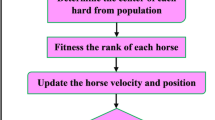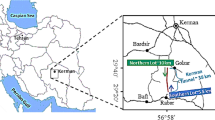Abstract
Shale gas, as one of the new natural gas deposits, has been widely concerned. Due to the multi-stage fracturing technology of horizontal wells used in shale gas development, frequent opening and closing of gas wells, and complicated characteristics of gas reservoirs, the problem of productivity prediction has not been well solved. At home and abroad, the empirical formula methods, analytical methods based on seepage theory, and reservoir numerical simulation methods are mainly used for shale gas productivity prediction. The common problem of these methods is that the productivity prediction accuracy is not high and it can not effectively guide shale gas development. In this paper, the traditional productivity prediction method is improved by using machine learning, the characteristics that represent the productivity change of gas wells are selected, and the optimization algorithm with strong classification ability for small sample data is introduced to establish an effective productivity prediction model. The model has been applied to the gas reservoir production prediction of a platform in Chinese Southwest Region and achieved high productivity evaluation accuracy, which proved to be a useful supplement to the traditional productivity prediction methods.








Similar content being viewed by others
Data availability
Enquiries about data availability should be directed to the authors.
Change history
01 April 2024
This article has been retracted. Please see the Retraction Notice for more detail: https://doi.org/10.1007/s10878-024-01137-7
References
Ahmadi MA (2015) Connectionist approach estimates gas–oil relative permeability in petroleum reservoirs: application to reservoir simulation. Fuel 140:429–439
Ahmadi MA, Zendehboudi S, Dusseault MB, Chatzis I (2016) Evolving simple-to-use method to determine water–oil relative permeability in petroleum reservoirs. Petroleum 2(1):67–78
Akande KO, Owolabi TO, Olatunji SO, AbdulRaheem A (2017) A hybrid particle swarm optimization and support vector regression model for modelling permeability prediction of hydrocarbon reservoir. J Petrol Sci Eng 150:43–53
Al-Anazi AF, Gates ID (2010) Support vector regression for porosity prediction in a heterogeneous reservoir: a comparative study. Comput Geosci 36(12):1494–1503
An Z, Zhou K, Hou J, Wu D, Pan Y (2022) Accelerating reservoir production optimization by combining reservoir engineering method with particle swarm optimization algorithm. J Petrol Sci Eng 208:109692
Baghban A, Bahadori M, Rozyn J, Lee M, Abbas A, Bahadori A, Rahimali A (2016) Estimation of air dew point temperature using computational intelligence schemes. Appl Therm Eng 93:1043–1052
Bourinet J-M (2016) Rare-event probability estimation with adaptive support vector regression surrogates. Reliab Eng Syst Saf 150:210–221
Dashti A, Amirkhani F, Jokar M, Mohammadi AH, Chau KW (2021) Insights into the estimation of heavy metals ions sorption from aqueous environment onto natural zeolite. Int J Environ Sci Technol 18:1773–1784
Gao J, You F (2017) Design and optimization of shale gas energy systems: overview, research challenges, and future directions. Comput Chem Eng 106:699–718
Hemmati-Sarapardeh A, Hajirezaie S, Soltanian MR, Mosavi A, Nabipour N, Shamshirband S, Chau KW (2020) Modeling natural gas compressibility factor using a hybrid group method of data handling. Eng Appl Comput Fluid Mech 14(1):27–37
Jayakumar R, Rai R (2014) Impact of uncertainty in estimation of shale-gas-reservoir and completion properties on EUR forecast and optimal development planning: a Marcellus case study. SPE Reserv Eval Eng 17(01):60–73
Kadkhodaie Ilkhchi A, Rezaee M, Moallemi SA (2006) A fuzzy logic approach for estimation of permeability and rock type from conventional well log data: an example from the Kangan reservoir in the Iran offshore gas field. J Geophys Eng 3(4):356–369
Khodakhah H, Aghelpour P, Hamedi Z (2022) Comparing linear and non-linear data-driven approaches in monthly river flow prediction, based on the models SARIMA, LSSVM, ANFIS, and GMDH. Environ Sci Pollut Res 29(15):21935–21954
Lu Y, Li H, Wang J, Liu T, Wu K (2022) Productivity evaluation model for multi-cluster fractured wells based on volumetric source method. Energy Rep 8:8467–8479
Mohamadi-Baghmolaei M, Azin R, Osfouri S, Mohamadi-Baghmolaei R, Zarei Z (2015) Prediction of gas compressibility factor using intelligent models. Nat Gas Ind B 2(4):283–294
Osisanya SO, Ayokunle AT, Ghosh B, Suboyin A (2021) Modified horizontal well productivity model for a tight gas reservoir subjected to non-uniform damage and turbulence. Energies 14(24):8334
Otchere DA, Ganat TOA, Gholami R, Ridha S (2021) Application of supervised machine learning paradigms in the prediction of petroleum reservoir properties: comparative analysis of ANN and SVM models. J Petrol Sci Eng 200:108182
Palmer I, Mansoori J (1998) How permeability depends on stress and pore pressure in coalbeds: a new model. SPE Reserv Eval Eng 1(06):539–544
Shackelford CD, Moore SM (2013) Fickian diffusion of radionuclides for engineered containment barriers: diffusion coefficients, porosities, and complicating issues. Eng Geol 152(1):133–147
Tang H, Di Y, Zhang Y, Li H (2017) Impact of stress-dependent matrix and fracture properties on shale gas production. Energies 10(7):996
Tariq Z, Mahmoud M, Abdulraheem A (2020) Real-time prognosis of flowing bottom-hole pressure in a vertical well for a multiphase flow using computational intelligence techniques. J Pet Explor Prod Technol 10:1411–1428
Wu Z, Dong L, Cui C, Cheng X, Wang Z (2020) A numerical model for fractured horizontal well and production characteristics: comprehensive consideration of the fracturing fluid injection and flowback. J Petrol Sci Eng 187:106765
Xiao C, Tian L (2020) Modelling of fractured horizontal wells with complex fracture network in natural gas hydrate reservoirs. Int J Hydrog Energy 45(28):14266–14280
Yin R, Zhang S (2021) A novel method for prediction of flowing pressure of multi-stage fracturing horizontal well. AIP Adv 11(7):075201
Yin R, Li Q, Li P, Lu D (2020) A novel method for matching reservoir parameters based on particle swarm optimization and support vector machine. Math Probl Eng 2020:1–10
Zhang JW, Song ZX, Wang SY (2021) Mechanical behavior of deep sandstone under high stress-seepage coupling. J Cent South Univ 28(10):3190–3206
Zhang RH, Chen M, Zhao YL, Xiao HS, Zhang DL, Kang B (2022) Production performance simulation of the fractured horizontal well considering reservoir and wellbore coupled flow in shale gas reservoirs. Energy Fuels 36(22):13637–13651
Acknowledgements
The authors sincerely thank the reviewers for their valuable comments that helped us to improve the quality of the paper. This work was supported in part by Anhui Provincial Scientific research projects (KJ2021A1194), Anhui Provincial Academic program for top professional talents (gxbjZD2022090), Anhui Wenda Information Engineering College scientific research project (XZR2021A18) and University Natural Sciences Research Project of Anhui Province (Project Number: 2022AH051797).
Author information
Authors and Affiliations
Corresponding author
Ethics declarations
Conflict of interest
The authors declare that they have no known competing financial interests or personal relationships that could have appeared to influence the work reported in this paper.
Additional information
Publisher's Note
Springer Nature remains neutral with regard to jurisdictional claims in published maps and institutional affiliations.
This article has been retracted. Please see the retraction notice for more detail:https://doi.org/10.1007/s10878-024-01137-7
Rights and permissions
Springer Nature or its licensor (e.g. a society or other partner) holds exclusive rights to this article under a publishing agreement with the author(s) or other rightsholder(s); author self-archiving of the accepted manuscript version of this article is solely governed by the terms of such publishing agreement and applicable law.
About this article
Cite this article
Zhang, S., Zhang, M., Wang, Z. et al. RETRACTED ARTICLE: Research on shale gas productivity prediction method based on optimization algorithm. J Comb Optim 45, 123 (2023). https://doi.org/10.1007/s10878-023-01049-y
Accepted:
Published:
DOI: https://doi.org/10.1007/s10878-023-01049-y




